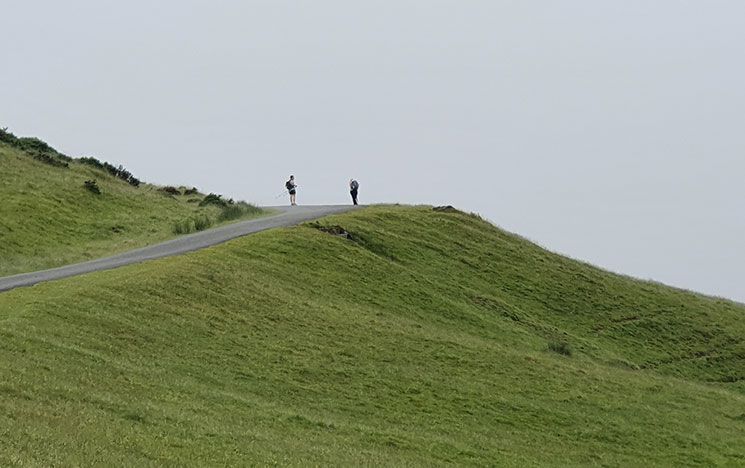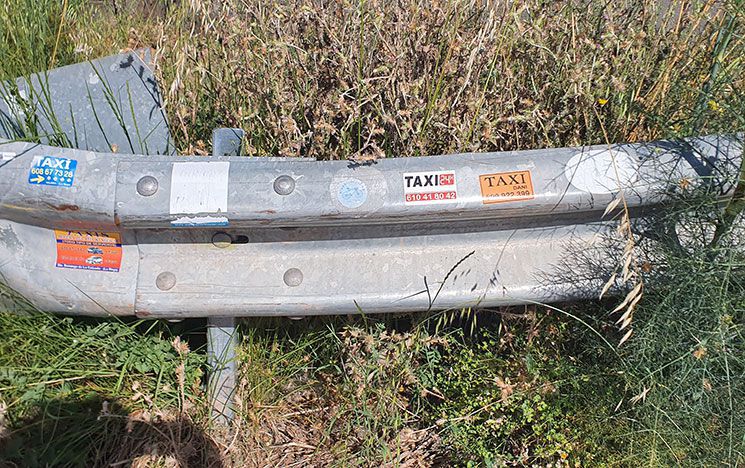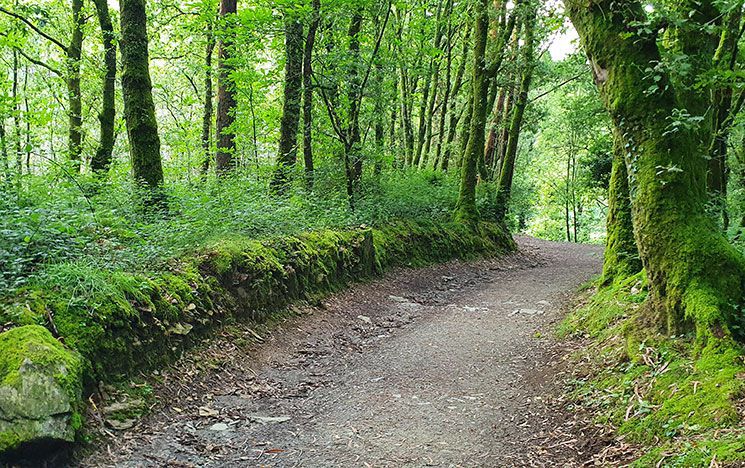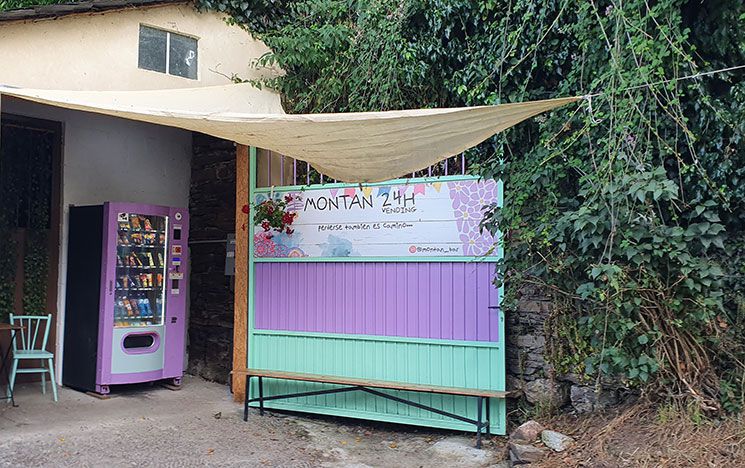The walk of purification
Jon Mitchell
I am having dinner in a pilgrim hostel in rural Spain. It is a typical 3-course menu del peregrino (pilgrim’s menu), and I’m joined at my table by Sadie, a fifty-something recent divorcée from Manchester.
I am around 4 weeks into 2 months’ fieldwork walking and talking along the Camino Francés: the ‘French Way’ to Santiago de Compostela. The route begins not far from Lourdes, in the Pyreneean town of Saint-Jean-Pied-de-Port, and covers 780 kilometres through north-central Spain, traversing the regions of Navarra, La Rioja, Castilla y Leon, reaching its destination in Galicia.
Sadie is at a turning point in her life. She has taken time away from work, family and financial responsibilities to consider the next phase – as a single woman, her kids grown up and her parents not quite yet a cause for concern. Walking the Camino will give her time to consider where she wants to live; what work she really wants to do; who she wants to be. It will also give her the opportunity to re-connect with her spiritual side. Although she was brought up as a Catholic, she does not regard herself as religious as such – but does think that there is ‘something there’ – ‘perhaps this will help me work out what that is,’ she says.

Nancy Louise Frey, in her book Pilgrim Stories (1998, University of California Press), recounts the way Angela, an experienced English pilgrim, had identified and classified the predominant types of pilgrim, by motivation and life-stage. In the 26 years since Pilgrim Stories was published, it hasn’t changed much. There are those motivated by health and exercise; those interested – sometimes professionally – in heritage and history; self-promoters who want to create a book/blog/vlog and establish themselves as Camino influencers; those who journey for religious reasons; and those who are at a crisis point or critical juncture in their lives and, like Sadie, want to make decisions about what comes next. This includes younger people on a project of self-discovery, older people at a significant flex-point, and the recently retired, who use the Camino to mark the transition.

The boundary between self-discovery and religious or spiritual discovery is often a fluid one. For Sadie, they are very much tied together, with the Camino being unique in its promise of all three – more so than the Pennine Way or Coast to Coast trail in UK, for example. Five days into her walk, Sadie is enchanted by the landscape; the combination of lush mountain meadows and narrow moss-covered drovers’ paths give it a magical feel: ‘Like something out of Lord of the Rings.’

As the dinner progressed, I explain my research, and the Pilgrimonics project – that we are interested in the entanglement of pilgrimage and economics, and indeed more broadly, between religion and economics. In a contemporary world that is dominated by global capital and transnational economic flows, how do we explain the enduring – even expanding – significance of pilgrimage? And are the two things related? For example, can we think of the Camino as not only a religious or spiritual activity, but also an economic one, that brings not only people but also money to the communities and regions it passes through? I continue: ‘Think of all the businesses that depend on Camino traffic – the bars and cafés, hotels and hostels, luggage transfer companies…some of the places we’ve walked through wouldn’t exist without the Camino.

In fact, you could see the Camino as a vast money-making scheme’ – and that’s arguably always been the case. A lot of the towns along the way were founded or consolidated by the Spanish kings in the eleventh and twelfth centuries to extract money from merchants and traders who came with the pilgrims. It’s always been big business. I am over-stating the case, but Sadie’s reaction is revealing of her – and others’ – understanding of pilgrimage. Looking rather crestfallen, she says ‘That’s disappointing. I’d rather not think of it that way.’
Inasmuch as pilgrimage involves a physical and existential movement away from everyday life, it is also thought to be a movement away from economy. Indeed, part of the attraction of the Camino is that it is ‘time out’ from work, and from financial concerns. Because of this, the presence of economy is bracketed in people’s minds. They’re not engaged in an economic activity, but in a pilgrimage; and drawing attention to the economic is jarring.
Yet this is not just a feature of the structure of pilgrimage. It also reveals a deeper message about modern thinking. By ‘modern’ I mean both ‘contemporary’ or ‘nowadays’; and ‘characteristic of the modern era’ – by which I mean the post-Reformation, post-Enlightenment era in which we live. Such modern thinking is characterised by a propensity to classify, identifying the essential properties of things, and what differentiates each from others. This motivated the scientific classification of different elements, species and processes, but also the identification of discrete areas of life, each with their own specific discipline of inquiry: biology, chemistry, economy, religion etc.
This propensity to separate out is what the late French philosopher/anthropologist Bruno Latour called the ‘work of purification.’ In his 1993 book We Have Never Been Modern (Harvard University Press), Latour points towards a central problem with modernist thought – that the divisions we use to describe the world are a product of the classification process, not of the world itself. For this reason, things that we think of as irreconcilably separate are actually not. His main focus is the distinction between nature and society which, in modernist thinking, should be absolutely separate, with nature following its own rules, and society its. As evidence for this not being the case he cites science: a set of disciplines dedicated to uncovering the laws of nature, but having to do so through social activities – experiments, laboratories, conferences, publications etc. These hybrids are evidence that nature and society have never been separate so, as in the title of the book, ‘we (moderns) have never been modern.’
We might apply to same logic to the distinction between religion and economy. The Reformation was motivated in no small part by a critique of the Mediaeval Church’s propensity to entangle religion with economy – through the practice of indulgences, the trade in relics, the accumulation of wealth etc. Since then, moderns have sought to consolidate the separation of religion and economy, purifying religion from the pollution of economy.
It is this work of purification that Sadie is invoking when disappointed about the commercial aspects of the Camino – its pilgrimonics. The Camino should be a walk of purification – in the sense that it allows people space to reflect and reconsider themselves, away from everyday concerns; but also in the sense that it maintains (or even consolidates) the separation of religion from economy.
‘Of course,’ I reply to her expression of disappointment, ‘you have to walk your own Camino. I’m only asking these questions because of the research.’ And with that, we return to the more familiar Camino conversations – how far are we walking tomorrow? Are there shops/water points along the way? What is the weather going to be like? The Camino has its own rhythm, and the return to that rhythm is welcome. At least for Sadie.